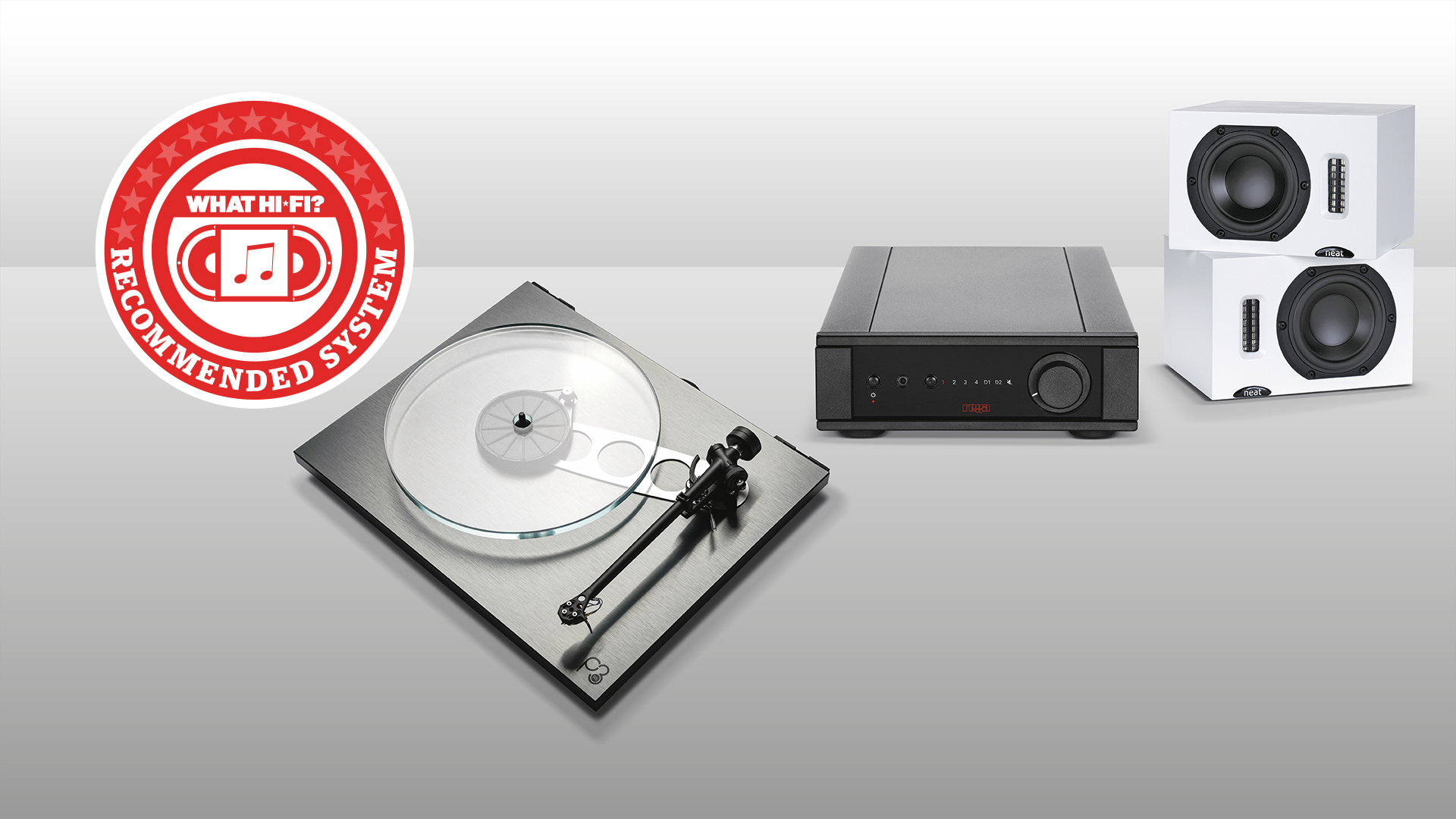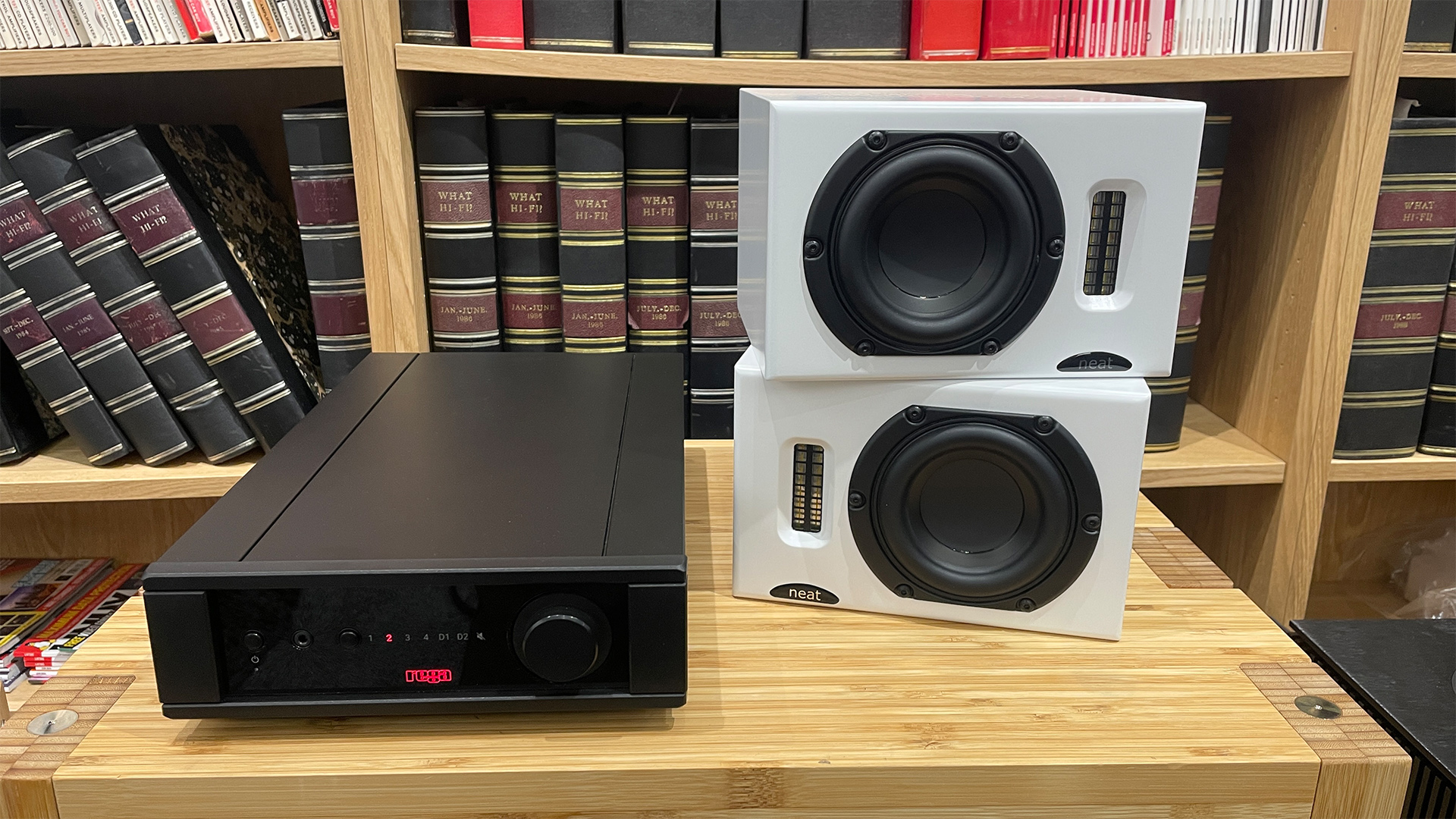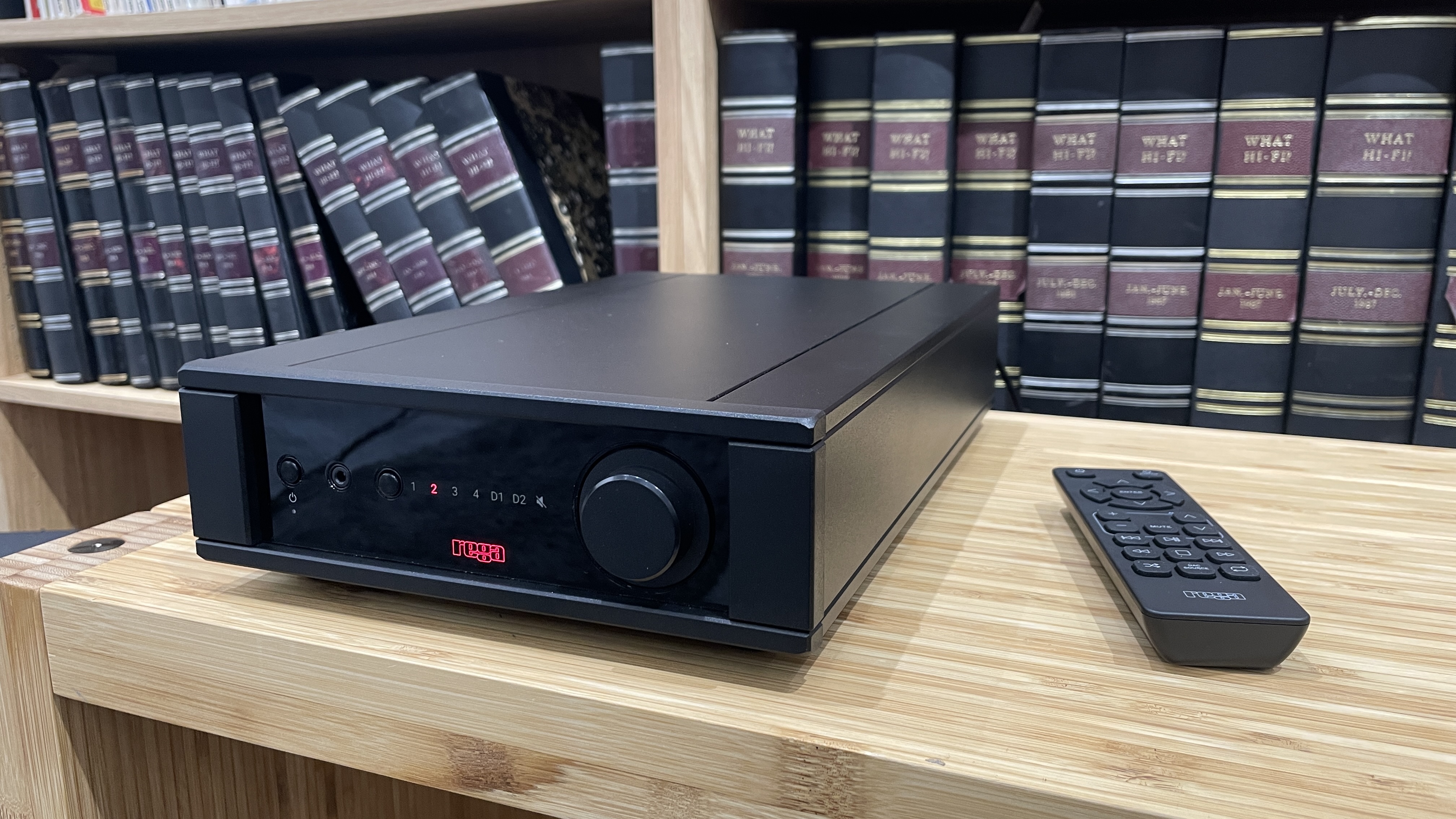This neat and compact vinyl system is ideal for those who want high-quality sound but are short on space
A quirky but incredibly fun pairing

We, at What Hi-Fi?, usually make a plea to our readers: those smaller loudspeakers you are using may be called (by some) bookshelf speakers, but you should always put them on proper speaker stands.
Which is why we prefer to call them “standmounts”. Support, after all, is important in all walks of life – but for hi-fi equipment it is absolutely vital.
And yet… what if that doesn’t suit your room, or your lifestyle – or, indeed, your desires? Well, far be it from us to tell you what you need in your life.
If you want to stick your speakers out of the way on a bookshelf, discreetly positioned and doing a decent job, we can’t, in all good conscience, object.
But, if that’s the way you need to go, we urge you to invest in a pair of speakers that at least have a chance of providing you with hi-fi sound; you and your music deserve that.
The system

Rega Planar 3 RS Edition: £999 / $1795 / AU$2199
Rega Brio Mk7: £799 / $1095 / AU$1699
The latest hi-fi, home cinema and tech news, reviews, buying advice and deals, direct to your inbox.
Neat Iota II: £1095 / $1699 / AU$2000
Total: £2893 / $4589 / AU$5898
Neat Iota II speakers

And, of course, that is where the little speakers in this system come in.
The Neat Iota speakers were introduced back in 2012 and we really liked them. The update took more than a decade to arrive, but here they are.
The Neat Iota II really are tiny, at just 13cm tall, 20cm wide and 18cm deep; you will note from those dimensions that they are designed to be used “on their side” – not really, of course, that’s the right way round, but you take the point.
Those dimensions mean that they will fit rather nicely in most bookcases, if that is your preferred placement.
The real joy of them is that the compromises that inevitably have to be accepted when you buy a tiny loudspeaker are diminished to such an extent that we are happy to recommend the MkII version of the Neats as much as we did the first.
They are quite pricey now, but if this is the style of speaker you need in your life, they will do the job beautifully.
So, here we go – we’re going to say it – shove them away in a bookcase, to keep your hi-fi system as discreet as you like. Or, come to that, on your desk as a great (possibly overkill?) desktop speaker system.
Fill your boots as far as positioning them goes. They will sound their best on stands, yes; but that’s not really what the Neat Iota II are about. What they can do with the signal given to them, and the placement conundrums you pose them, is impressive.
And, wow, are they fun to listen to. To quote our review, “They deliver a surprisingly wide scale of sound and with a deal of punch where needed, and keep their composure when the volume is high.
“Even with our expectations curbed about the amount of deep bass on offer, the Neats bring agility, snap and verve to the bass frequencies that they do eke out, and it all knits together nicely with the clear mids and airy, sweet highs.”
Rega Brio Mk7 integrated amplifier

To continue the discreet theme with this system – a trio of reboots, mark-ups and specials, and all the better for it – we turn to the seventh iteration of Rega’s mighty (in performance, not size) Brio amplifier.
Seven is a lucky number for some, but the Southend-on-Sea based stalwart of the UK’s hi-fi scene needed no good fortune here.
This Brio Mk7 is (as it should be) the most capable version yet, and stands right among the leaders in its class.
It still enjoys those discreet benefits of the half-width case, but the big news in this iteration is the addition of digital inputs.
The Brio Mk7 offers the choice of single coaxial and optical connections, and is compatible with PCM files up to 24-bit/192kHz. That capability isn’t relevant to us in this particular set-up, but it could well prove a useful feature for future upgrades.
As is the way in the current global climate, the Rega Brio Mk7 is more expensive than its forebears.
It can certainly still hold its own, though, in these headier environs. The phono stage is talented – as, we are happy to confirm, is the DAC module – and the amplifier is an energetic and exciting performer, able to convey the drama in a piece of music wonderfully.
It is brimming with confidence and has a good grip on rhythm, giving music a solid foundation and bringing a nice sense of momentum to proceedings.
Rega Planar 3 RS Edition turntable

And it marries nicely, of course, with its stablemate turntable.
The Rega Planar 3 RS (Rega Special) Edition is a stunning achievement, building on an already great turntable and turning everything up to the max, without losing any ability along the way.
The RS has an upgraded plinth over the regular vanilla Planar 3, and comes with the step-up Nd5 cartridge, compared with the normal deck’s Nd3.
Importantly, the RS also comes with the outboard Neo PSU Mk2 power supply – and Rega’s Reference EBLT drive belt is fitted for better speed accuracy. (The standard Planar 3 has the EBLT Advance belt version.)
And all these upgrades make a massive difference – every element of the RS Edition improves upon the standard Planar 3’s performance in incremental but substantial ways.
It delivers a clear step up in performance that is more than worth the extra outlay. As we say in our review of the special edition deck, when comparing it with the regular Planar 3, “The RS Edition sounds cleaner, more detailed, more muscular and with an even bigger sense of space and openness.”
When playing Beethoven’s Fifth Symphony, “The dramatic piece is delivered with stronger and more far-reaching dynamics, with the RS handling the swift changes in speed, dynamism and intensity adeptly.
"It fills a room more easily – the width of the orchestra is as palpable as the depth of the soundstage. There is a confidence and effortless quality to the way this turntable sounds compared with the standard Planar 3.”
High praise indeed when you consider the original deck can stand tall among its contemporaries.
This system, then, takes all the advantages of its manufacturers’ experience and the lessons they have learned over the years with each product, and runs with them in a wonderfully musical and cohesive way.
All the while superbly catering for a clientele who need their hi-fi system to sit discreetly, almost unnoticed, in their room; until, of course, it is time to sing.
MORE:
Forget vinyl and CD – this is my favourite music format of all time
We've built an affordable, versatile hi-fi system for vinyl, streaming and headphone fans

Jonathan Evans is the editor of What Hi-Fi? magazine, and has been with the title for 18 years or so. He has been a journalist for more than three decades now, working on a variety of technology and motoring titles, including Stuff, Autocar and Jaguar. With his background in sub-editing and magazine production, he likes nothing more than a discussion on the finer points of grammar. And golf.
You must confirm your public display name before commenting
Please logout and then login again, you will then be prompted to enter your display name.
